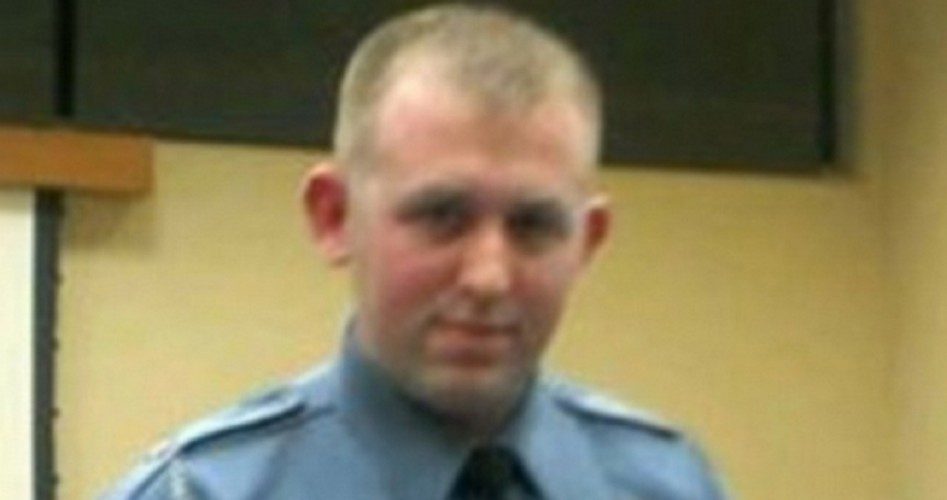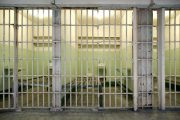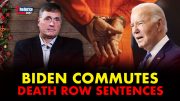
The Ferguson grand jury turned down all five potential charges brought against Ferguson police officer Darren Wilson (shown), with none of them being persuasive enough to garner the nine votes necessary to indict him from the 12-member grand jury.
St. Louis County Prosecutor Robert McCulloch, heavily criticized for having close ties to law enforcement and therefore allegedly biased in favor of Wilson, announced the decision Monday night in a carefully crafted 20-minute statement designed to defuse nearly all of the potential charges that might be brought against his handling of the grand jury investigation. In the question-and-answer period following his presentation, it was clear that reporters who had already prejudged the verdict had been disarmed by McCulloch’s remarks.
Even President Obama, weighing in immediately following the verdict’s announcement, was hard-pressed to do much more than claim that the troubles in Ferguson were symptomatic of racial discrimination under the law elsewhere in the country and “that more needs to be done” as a result.
McCulloch told reporters that the grand jury, which had been selected in May, long before the August 9 shooting of Michael Brown by Officer Wilson, spent 70 hours listening to testimony from more than 50 eyewitnesses to the shooting, along with medical examiners’ opinions from the three autopsies performed on Brown following the shooting.
According to McCulloch, many of those witnesses, when pressed, recanted their initial testimony, or changed their stories when presented with physical evidence that contradicted them. The jury was quick to determine who was reliable and who was just repeating hearsay, and sorted the real from the phony. Said McCulloch:
The physical and scientific evidence examined by the grand jury, combined with the witness statements, supported and substantiated by that physical evidence, tells the accurate and tragic story of what happened.
President Obama claimed that the Ferguson verdict indicated that “there are still problems, and communities of color aren’t just making these problems up.”
There were at least three major concerns unaddressed by either McCulloch, the grand jury, or the president: whether justice was served, whether Wilson considered himself in imminent danger of receiving grievous bodily injury or even death at the hands of Brown, and how Wilson’s training in the Tueller Drill (explained below) likely saved his life.
Lady Justice is equipped with three symbols: a sword (symbolizing the court’s power), a balance scale (weighing competing interests in the case), and a blindfold (indicating impartiality). For Wilson, the sword could have cut either way: not guilty, or an indictment, based on probable cause, on anything from murder one to involuntary manslaughter. For McCulloch, he and his staff worked diligently to present all the evidence that could be obtained not only from the scene of the shooting but from every party who could shed light on what happened during the Saturday, August 9, shooting. And for the grand jury, it was kept cloistered to make sure that outside influences that might affect its decision was reduced to the lowest possible level.
Precious little was said about Wilson’s split-second decision that was made that day, following the altercation with Brown in the front seat of Wilson’s car. By attempting to wrest his gun from Wilson’s belt, Brown had committed a felony and, under Missouri law, Wilson had every right to chase down Brown when he turned and ran. When Brown turned on Wilson — which some observers described as a rush toward the officer — evidence noted that Brown was less than 25 feet away from Wilson, giving the officer less than two seconds to determine if his life was in sufficient danger to use deadly force to end the threat.
Part of Wilson’s police training involved what is known as the Tueller Drill, a self-defense training exercise to prepare an officer against an attacker who is just 21 feet away. Wikipedia reports:
Sergeant Dennis Tueller of the Salt Lake City, Utah Police Department wondered how quickly an attacker with a knife could cover 21 feet, so he timed volunteers as they raced to stab the target.
He determined that it could be done in 1.5 seconds.
It’s in that 1.5 seconds that the target — in this case, Darren Wilson — had to determine if Brown’s bull rush would result in imminent and otherwise unavoidable danger of either grave bodily injury or death. It is helpful to remember that Wilson had already been physically assaulted by Brown in the front seat of his police cruiser, and so he already knew that Brown, at more than 6 feet and 300 pounds, certainly had the capability of doing so.
Wilson faced a dilemma: If he shoots too early, he risks being charged with murder. If he waits too long, he risks further serious bodily injury or death. This is known as the Tueller “danger zone.” In a moment of crisis, it comes down to training and reflexes.
Wilson made that automatic decision. As internationally respected law enforcement trainer Massad Ayoob explained: “Deadly force is justified only when undertaken to prevent imminent and otherwise unavoidable danger of death or grave bodily harm to the innocent.”
Wilson is not out of the woods by any means. The civil rights investigation by Attorney General Eric Holder’s Department of Justice continues. His profession as a police officer may be over. According to rumors yet to be confirmed, Wilson will be resigning from the Ferguson police force. He will for many months, perhaps years, be looking over his shoulder for threats by those who wish to do him harm. And for the rest of his life, he will likely have to explain to potential future employers just what happened in Ferguson, Missouri, on Saturday, August 9, when he was doing his duty and got in the crossfire of political interests using the incident to promote their own agendas.
A graduate of an Ivy League school and a former investment advisor, Bob is a regular contributor to The New American magazine and blogs frequently at www.LightFromTheRight.com, primarily on economics and politics. He can be reached at [email protected]



